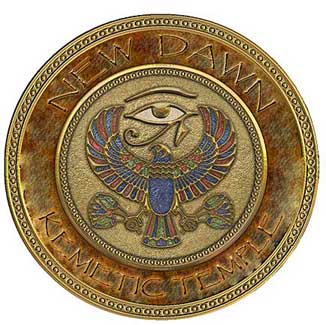|
|
|


~Jimmy Dunn~
Tanis is considered to be probably the most important archaeological
site in Egypt's northern Delta, probably because it is one of the largest and
certainly the most impressive of the sites in the Delta. It was the capital
of the nineteenth Lower Egyptian nome in the late period (747-332 BC). First
Auguste Mariette excavated the site in 1860-80, then Flinders Petrie excavated
here in 1883-86 and Pierre Montet excavated in 1921-51. The site is still being
excavated by the French today. Montet thought that the site was Piramesse, the
capital Sety I and Ramese II, but later findings proved him wrong.
Montet discovered royal tombs of the 21st and 22nd Dynasties at Tanis in 1939,
but his discovery resulted in little recognition because of the outbreak of
World War II. The tombs were all subterranean and built from mud-brick and reused
stone blocks, many of which were inscribed. Four of the tombs belonged to Psusennes
I (1039-991 BC), Amenemope (993-984 BC), Osorkon II (874-850 BC) and Sheshonq
III (825-733 BC). The occupants of the other two tombs are unknown. However,
the hawk-headed silver coffin of Sheshonq II was also found in Psusennes' tomb,
as well as the coffin and sarcophagus of Amenemope. The sarcophagus of Takelot
II (850-825 BC) was found in the tomb of Osorkon II.
The artifacts from the Tanis necropolis are the most important source of knowledge covering royal funerary goods of the Third Intermediate Period.
The earliest recorded building at Tanis dates to the reign of Psusennes I during the 21st Dynasty. He was responsible for the huge mud-brick enclosure wall surrounding the temple of Amun. The wall is measures 430 by 370 meters 10 meters tall, and was 15 meters thick. Within the outer wall is a mud-brick interior wall. However, rulers from the 21st and early 22nd Dynasties added to the temple complex, and Nectanebo I (380-362 BC) used stone from earlier building projects of Sheshonq and Psamtek to construct the sacred lake.
Today the site is full of inscribed and decorated blocks, columns, obelisks and statues of various dates, some inscribed with the names of rulers such as Khufu, Khephren, Teti, Pepi I and II and Senusret I. However, the majority of inscribed monuments are connected with Ramesses II. However, these items must have been bought in for there is nothing the site dates from before the reign of Psusennes I. He is positively attested by foundation deposits in the sanctuary in the easternmost part of the great temple. Other later kings are also attested to through foundation deposits.
Near the southwestern corner of the main temple complex is a smaller temple dedicated to Mut and Khonsu. Astarte, an Asiatic goddess, was also worshiped in this smaller temple, which was rebuilt during the reign of Ptolemy IV (221-205 BC).
There were other structures within the encloser, in particular a sed-festival chapel and a temple of Psamtik I, but these were some of the stones used by Nectanebo I in his building efforts.